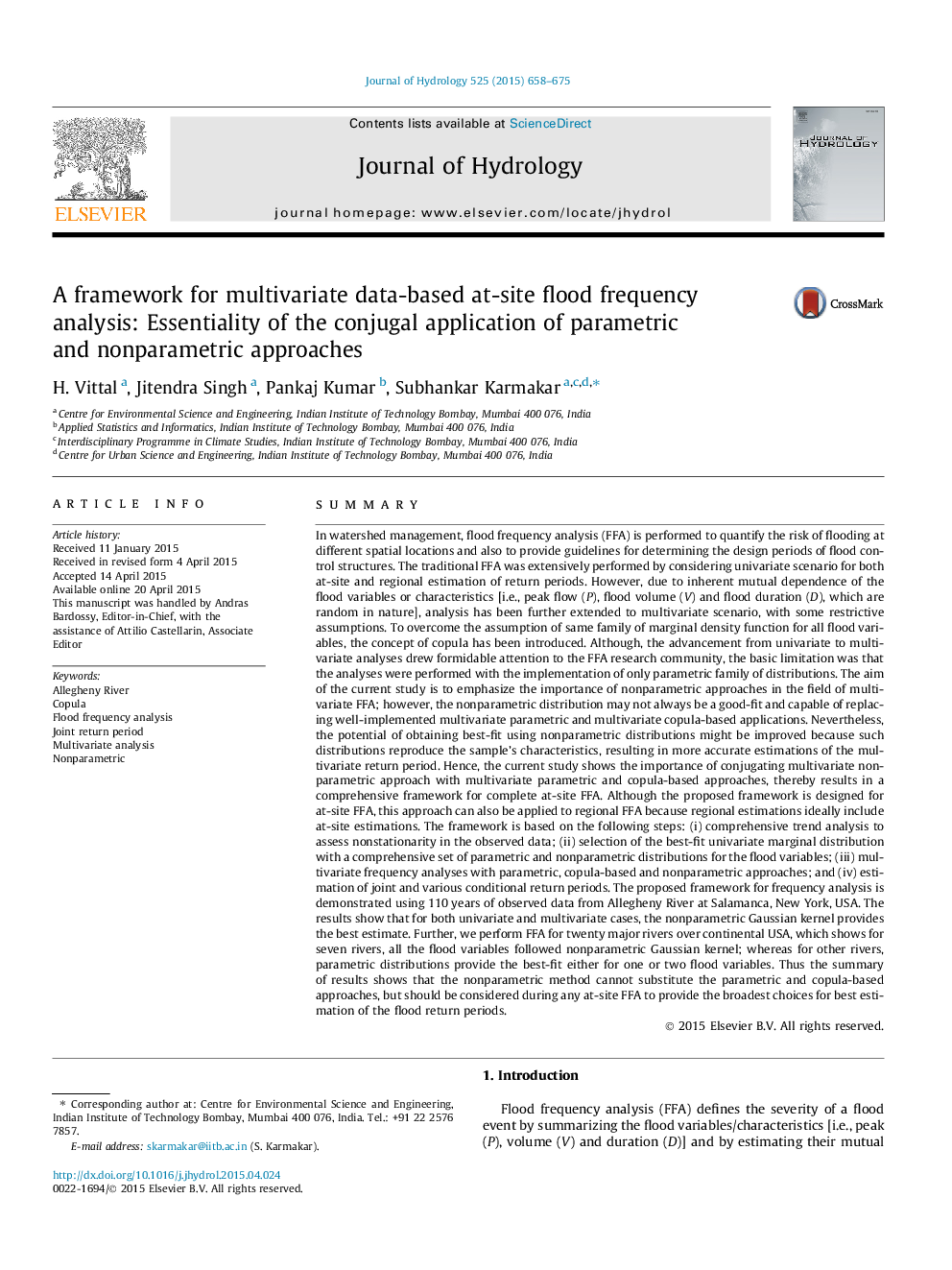| کد مقاله | کد نشریه | سال انتشار | مقاله انگلیسی | نسخه تمام متن |
|---|---|---|---|---|
| 6410665 | 1629925 | 2015 | 18 صفحه PDF | دانلود رایگان |
- A detail and systematic multivariate flood frequency analysis (FFA) is conducted.
- The importance of nonparametric approaches in multivariate FFA is emphasized.
- Parametric, copula-based and nonparametric approaches are applied conjugally.
- A framework providing direction for both at-site and regional FFAs is proposed.
SummaryIn watershed management, flood frequency analysis (FFA) is performed to quantify the risk of flooding at different spatial locations and also to provide guidelines for determining the design periods of flood control structures. The traditional FFA was extensively performed by considering univariate scenario for both at-site and regional estimation of return periods. However, due to inherent mutual dependence of the flood variables or characteristics [i.e., peak flow (P), flood volume (V) and flood duration (D), which are random in nature], analysis has been further extended to multivariate scenario, with some restrictive assumptions. To overcome the assumption of same family of marginal density function for all flood variables, the concept of copula has been introduced. Although, the advancement from univariate to multivariate analyses drew formidable attention to the FFA research community, the basic limitation was that the analyses were performed with the implementation of only parametric family of distributions. The aim of the current study is to emphasize the importance of nonparametric approaches in the field of multivariate FFA; however, the nonparametric distribution may not always be a good-fit and capable of replacing well-implemented multivariate parametric and multivariate copula-based applications. Nevertheless, the potential of obtaining best-fit using nonparametric distributions might be improved because such distributions reproduce the sample's characteristics, resulting in more accurate estimations of the multivariate return period. Hence, the current study shows the importance of conjugating multivariate nonparametric approach with multivariate parametric and copula-based approaches, thereby results in a comprehensive framework for complete at-site FFA. Although the proposed framework is designed for at-site FFA, this approach can also be applied to regional FFA because regional estimations ideally include at-site estimations. The framework is based on the following steps: (i) comprehensive trend analysis to assess nonstationarity in the observed data; (ii) selection of the best-fit univariate marginal distribution with a comprehensive set of parametric and nonparametric distributions for the flood variables; (iii) multivariate frequency analyses with parametric, copula-based and nonparametric approaches; and (iv) estimation of joint and various conditional return periods. The proposed framework for frequency analysis is demonstrated using 110Â years of observed data from Allegheny River at Salamanca, New York, USA. The results show that for both univariate and multivariate cases, the nonparametric Gaussian kernel provides the best estimate. Further, we perform FFA for twenty major rivers over continental USA, which shows for seven rivers, all the flood variables followed nonparametric Gaussian kernel; whereas for other rivers, parametric distributions provide the best-fit either for one or two flood variables. Thus the summary of results shows that the nonparametric method cannot substitute the parametric and copula-based approaches, but should be considered during any at-site FFA to provide the broadest choices for best estimation of the flood return periods.
Journal: Journal of Hydrology - Volume 525, June 2015, Pages 658-675
